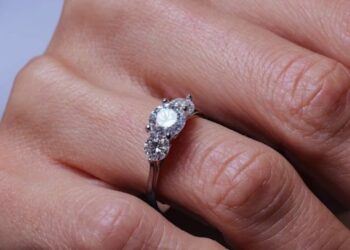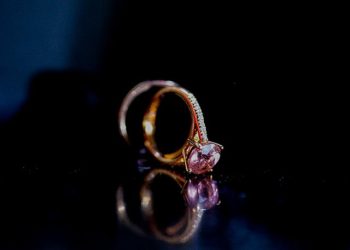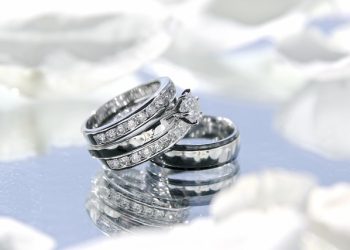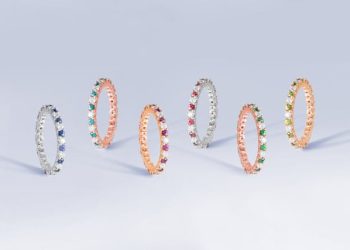Wedding rings have long held a special place in our hearts and culture. Far from being mere accessories, they symbolize deep-rooted love and commitment. The moment two people exchange these rings is a tangible representation of their promise to be with each other through thick and thin.
But why do we attribute such profound meaning to a small band of metal or wood? The answer lies in centuries of tradition, cultural beliefs, and personal stories.
This blog post will take you through the fascinating world of wedding rings, from their historical origins to the latest trends, ensuring you appreciate their true significance.
Historical Evolution of Wedding Rings
The tradition of wearing wedding rings dates back to ancient Egypt, around 3000 BCE. Egyptians believed the circle symbolized eternity, and the space inside the ring represented a gateway to unknown worlds. Fast forward to ancient Rome, and wedding rings became a symbol of ownership. Roman men gave rings to their brides as a sign of their commitment and control.
Medieval Europe saw the rise of gold and gemstone rings, believed to protect the wearer from evil spirits. The Victorian era introduced elaborate designs featuring intricate engravings and romantic motifs.
In modern times, the symbolism has shifted towards equality and mutual love. Both partners now exchange rings, signifying their shared commitment. Understanding this historical context helps us appreciate the deep layers of meaning packed into these small but powerful symbols.
Cultural Significance Across the World
Wedding rings may be a universal symbol of love, but their significance varies across cultures. In some African cultures, couples exchange beaded rings that signify their tribes and families. In India, the wedding ring tradition is relatively recent, with the Mangalsutra—a sacred thread—historically used to signify marriage.
Japanese couples often exchange simple, unadorned bands to reflect their cultural value of minimalism. In contrast, Middle Eastern wedding rings are often elaborate, featuring intricate designs that reflect the region’s rich artistic heritage.
Exploring these cultural differences can deepen your appreciation for the diversity and richness of wedding ring traditions, making your own choice even more meaningful.
Modern Trends in Wedding Ring Design
The world of wedding rings has evolved dramatically, with modern designs offering a plethora of options. From minimalist bands to intricate vintage-inspired pieces, there’s something for everyone.
One trend gaining traction is the use of alternative materials like wooden wedding rings. These eco-friendly options offer a unique aesthetic and are perfect for those looking to break away from traditional metals. Another popular trend is stacking rings, where couples choose multiple thin bands to wear together, creating a personalized look.
Customization is also on the rise, with many opting for engraved messages, birthstones, or even fingerprint imprints to make their rings uniquely theirs. These modern trends show that wedding rings are far from static symbols; they evolve with our tastes and values.
Personalized and Eco-Friendly Options
In an age where sustainability is key, more couples are turning to eco-friendly wedding rings. Wooden wedding rings, for instance, are not only beautiful but also environmentally responsible. These rings are crafted from sustainably sourced wood, often combined with recycled metals.
Personalization takes this a step further. Imagine wearing a ring made from wood from a tree planted on a special occasion, or metal recycled from family heirlooms. Such choices not only reduce environmental impact but also add layers of personal significance to your wedding ring.
By choosing personalized and eco-friendly options, you’re not just making a statement about your love for each other but also your love for the planet.
The Role of Wedding Rings in Relationships
Wedding rings serve as a constant reminder of the vows exchanged and the love shared. They are physical symbols of an emotional bond, worn daily to signify unending commitment. But their role goes beyond symbolism.
Studies have shown that wearing a wedding ring can influence behavior. People who wear wedding rings report feeling more connected to their partners, and the rings can even act as deterrents to infidelity.
In times of conflict, a simple glance at the ring can remind couples of their promises, helping to diffuse tension and foster reconciliation. Thus, wedding rings play an active role in nurturing and maintaining relationships.
Practical Guide on Choosing the Right Wedding Ring
Choosing the perfect wedding ring involves more than just picking a design that catches your eye. Here are some practical tips to help you make the right choice:
- Set a Budget: Determine how much you’re willing to spend. Wedding rings come in various price ranges, so it’s essential to set a budget early on.
- Consider Lifestyle: If you lead an active lifestyle, opt for durable materials like platinum or titanium. There are also options for silicone rings that are perfect for those in professions that involve using their hands.
- Choose the Right Fit: Comfort is key. Ensure your ring fits well and feels comfortable on your finger. Remember, you’ll be wearing it every day!
- Think About Long-Term Wear: While trendy designs are appealing, consider whether you’ll still love the design years down the line. Classic styles often stand the test of time.
- Personalize It: Make your ring uniquely yours with engravings, unique materials, or special gemstones that hold personal significance.
By following these tips, you’ll find a ring that not only symbolizes your love but also suits your lifestyle and personality.
The Eternal Bond Symbol
In conclusion, wedding rings are far more than just pieces of jewelry. They are symbols of love, commitment, and personal history. From their ancient origins to their modern interpretations, these small bands carry immense significance.
Whether you opt for traditional gold, modern metals, or eco-friendly wedding rings, the choice is deeply personal and meaningful. By understanding the rich history and cultural significance, you can make a more informed and heartfelt decision.







